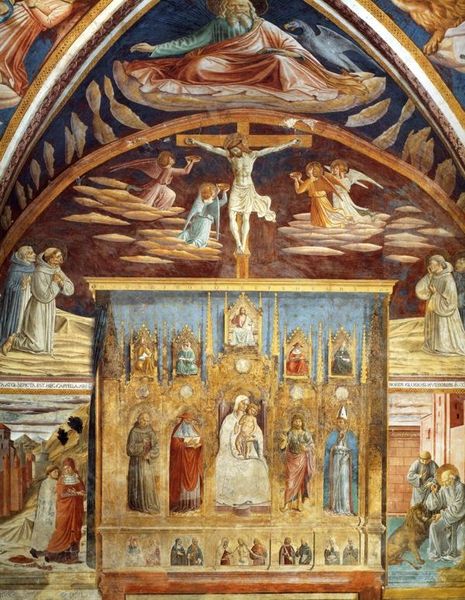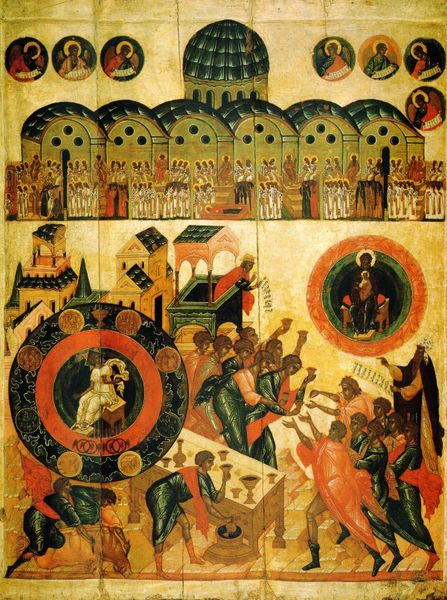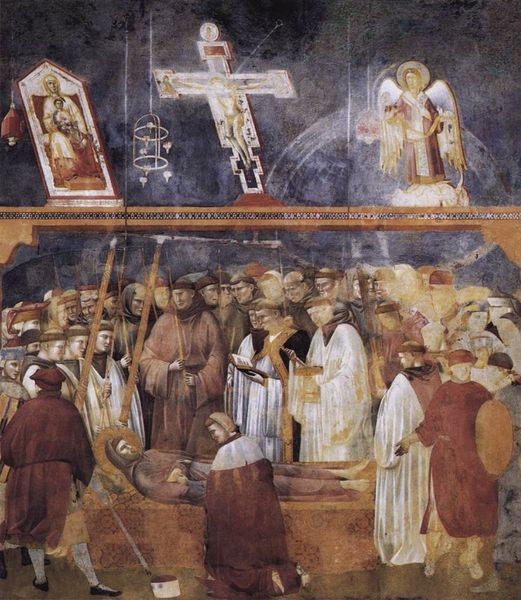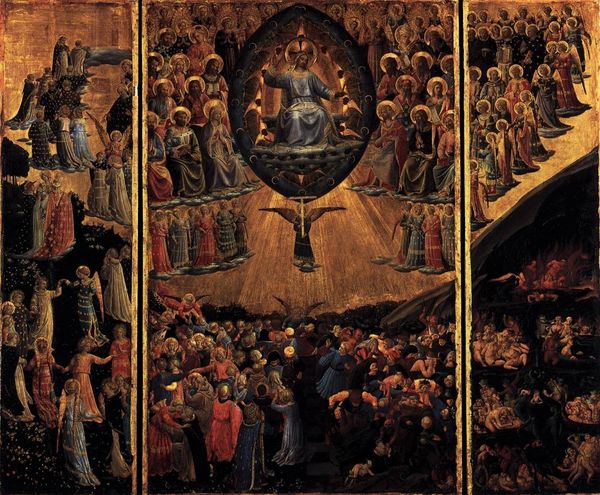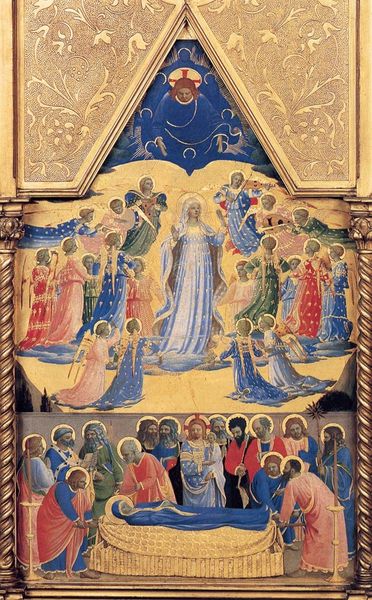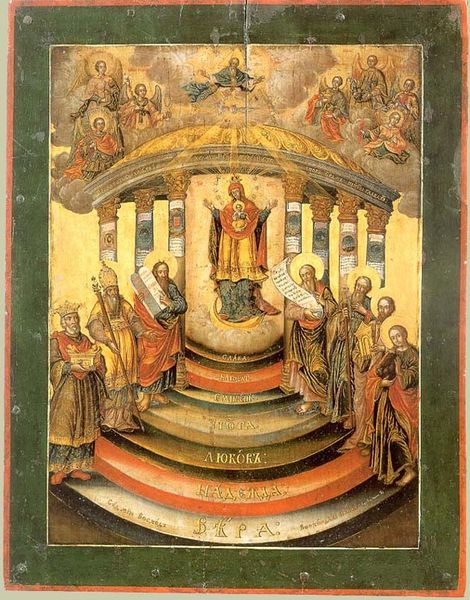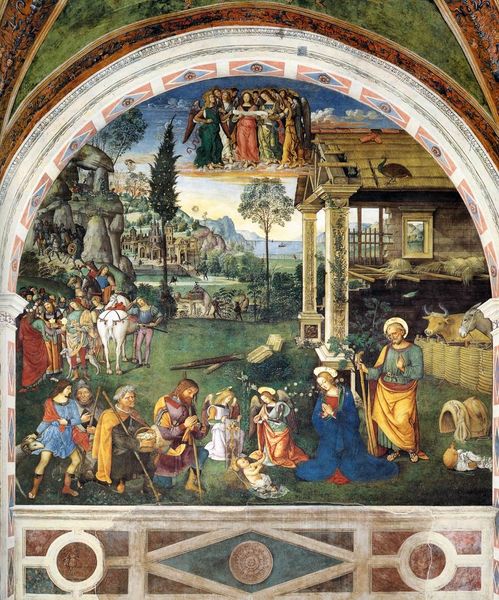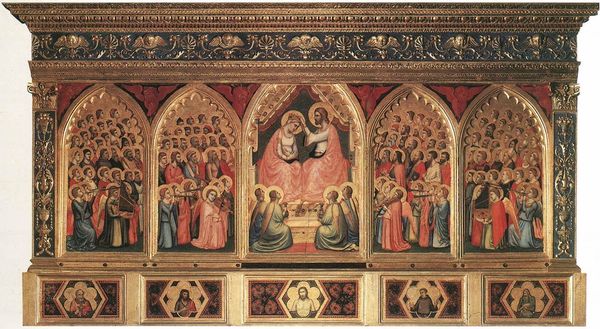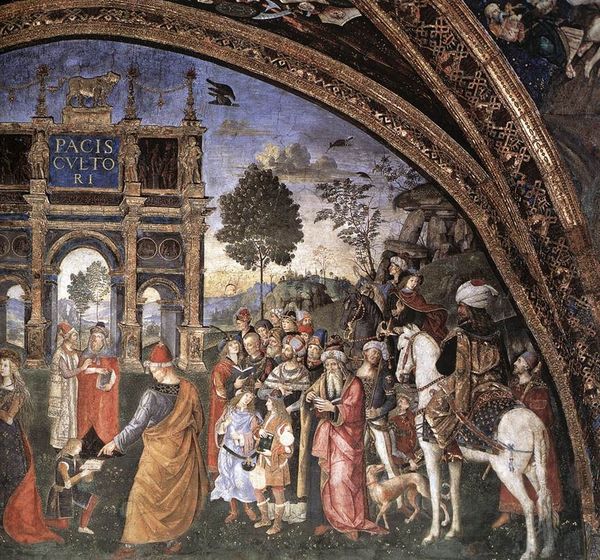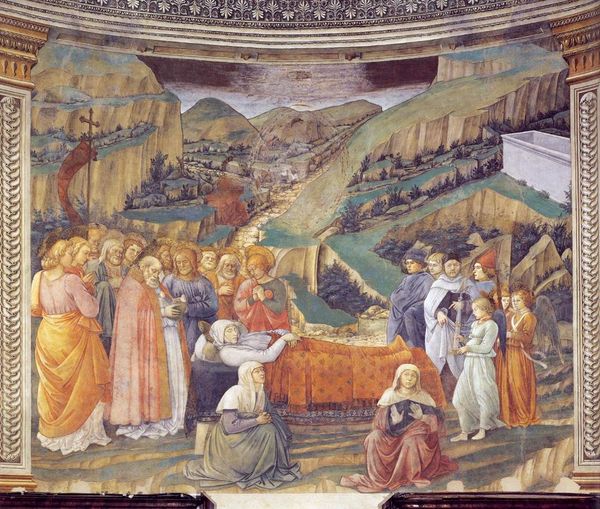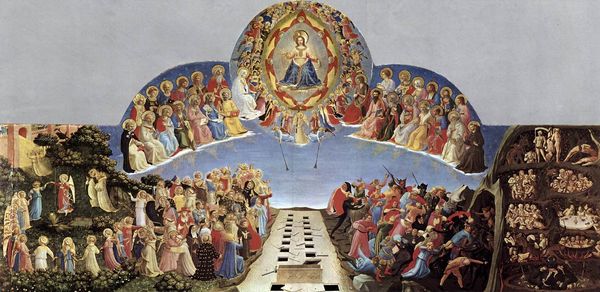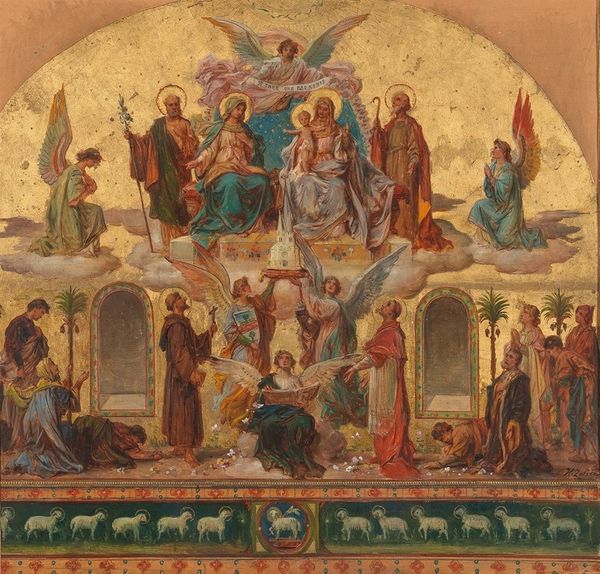
painting, fresco
#
medieval
#
narrative-art
#
painting
#
sculpture
#
holy-places
#
figuration
#
fresco
#
traditional architecture
#
arch
#
christianity
#
men
#
history-painting
#
italian-renaissance
#
historical building
#
christ
Dimensions: 1000 x 840 cm
Copyright: Public domain
Curator: Looking at Giotto’s “Last Judgement,” a fresco painted around 1306 inside the Scrovegni Chapel in Padua, Italy, what’s your immediate reaction? Editor: It’s dominated by the density of figures, the sheer weight of humanity being processed. What really strikes me is how this must have worked structurally and economically, considering it’s fresco. How was the wall prepared to hold such a complex image in pigment? Curator: Fresco, painting on fresh, wet plaster, meant speed and a very calculated process. There was an urgency inherent in capturing the image before the plaster dried, embedding the artwork directly into the architecture. You can really see the symbolism embedded. Giotto makes choices, he has Christ centrally located and the narrative spills down. Editor: Precisely. The immediacy is palpable. This isn't just aesthetic; the choice of fresco speaks to the constraints—the time, labor, and material realities of 14th-century art production. The cartoon drawings and pigment choices also suggest assistants were most definitely at play here. It becomes an act of faith but of labor at its finest, in this holy place. Curator: And there’s a direct relationship between what the viewers see, or would have seen in Giotto’s time, with what they should believe, offering assurance about their soul if they followed their faith, in the most graphic detail. See the blessed and the damned depicted? These scenes were carefully designed to deliver specific theological lessons. Even with figures compressed so closely they’re legible for conveying cultural meaning. Editor: Yes, a morality play almost laid out on a stage, layer upon layer. It feels instructive, both religiously and artistically. And it makes one wonder: What were Giotto’s fees at that time, and were those who were enslaved made to make this mural in order to scare them, to essentially use art and religion, as one tool for enslavement? Curator: That's a crucial lens. What appears to be purely spiritual or symbolic is also enmeshed in the socio-economic power structures of the era. When considering his lasting symbolic legacy, as he shifted painting to focus on humans not icons. The creation story must be viewed with as critical and analytical lens as it does a sympathetic one. Editor: Absolutely, It adds a new dimension to interpreting "Last Judgement." I will certainly return for other discussions about its construction as I analyze paintings! Curator: And, of course, its role within the narratives that define our collective cultural memory of both art and faith, hopefully inspiring visitors to question how powerful the role that an image plays over time can be.
Comments
No comments
Be the first to comment and join the conversation on the ultimate creative platform.
